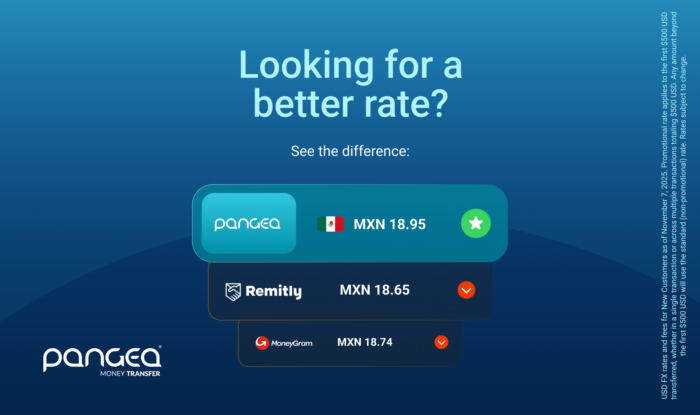With the return to school comes new routines, giddy excitement a few nerves — and a big hit to the family budget. According to experts, families in the U.S. will spend on average between $500 and $800 per child on back-to-school supplies, making back-to-school shopping the largest shopping event for families aside from the holiday season.
While the spend is stressful when life feels normal, with inflation impacting the marketplace, families will feel the effect of back-to-school shopping even more as the 2023-24 year begins. Whether you’re doing the shopping or sending support to your family from afar, we’re here to help you meet your child’s school supply needs while still making healthy decisions for your family finances.
Here are a few ways to shop smart this back-to-school season.
Determine a Budget
Before you even click on the list of required classroom supplies, determine how much you can spend on each kid — and though it might be tempting, do your best to stick to it. With this framework in place, you can make the right choices about where you need to spend extra and where you can cut back.
Online budgeting tools and templates can be incredibly helpful in organizing your finances. Apps like Mint and EveryDollar offer easy-to-use budgeting apps and tools that allow you to track your expenses, set financial goals, and stay on top of your back–to-school budget.
Create a Shopping Strategy
As you gear up for back-to-school shopping, making a plan can lead to significant savings on school supplies. Following these smart shopping tips can help you make the most of your budget:
- Take Inventory: Before heading to the store, check your home for any school supplies from the previous year that are still in good condition.
- Reuse: Sure, a new box of markers or a brand-new tablet are much more exciting. But reusing last year’s supplies is a quick and easy way to save. Take inventory of last year’s materials and see what still has some life left in it. Have a partially used notebook? Tear out the pages and use it again. Highlighters and markers still work? Put them in the rotation. Folders still functional? Use stickers to cover up old class names or notes and use them again. Employing what’s already on hand will allow you to put your money toward other essential purchases.
- Create a List: Make a complete list of school supplies that your child will need for the upcoming year. Sort the list by subjects and prioritize items that are the most immediate needs.
- Online Deals and Discounts: Take advantage of online retailers that offer back-to-school deals and discounts. Retailers often have special offers on school supplies during the back-to-school season.
- Bulk Buying: Consider buying school supplies in bulk, especially for items that your child will use frequently throughout the year. Wholesale clubs like Costco or Sam’s Club offer discounted prices on bulk purchases.
- Store Loyalty Programs: Sign up for store loyalty programs at your favorite retailers. Loyalty members often receive exclusive discounts and early access to sales events.
Buy Now vs. Buy Later
Look over your list and determine what you can buy now, and what you can buy in a month or two. For example, it’s unlikely your child will need two packages of #2 pencils immediately; buy one now, and one later. Same goes for multiple packages of Kleenex, disinfectant wipes, glue sticks, erasers, and other items that are listed in multiples to provide backup. Scoop up the first round before school starts, and then purchase the second round of items in a month or two, when your spending has evened out.
Tech Savings
Electronics and tech are some of the priciest back-to-school items. That said, there are ways to save on your student’s tech needs without compromising on quality.
Keep an eye out for back-to-school sales from major electronics retailers. These sales often offer significant discounts on laptops, tablets, and other devices. You can also explore refurbished electronics. These devices are previously owned, and come at a discounted price, but have been thoroughly tested and certified to be in excellent working condition. Many times, they come with warranties, providing peace of mind.
Check if your child’s school or university offers educational discounts on electronics. Some schools have partnerships with technology companies that provide special discounts to students and their families.
Make sure you are always putting the features your child requires for their schoolwork first, and be open to alternative brands and models that fit your budget.
Thrifty Fashion Finds
Your kid deserves to go back to school in style, right? Instead of splurging on brand-new clothing, consider thrifty fashion finds that balance style and affordability. Thrift stores and consignment shops offer a treasure trove of gently-used clothing at budget-friendly prices, supporting sustainable and eco-friendly shopping.
Online marketplaces like thredUP and Poshmark provide a convenient way to explore a wide selection of pre-loved kids’ clothes, including popular brands at a fraction of the original cost.
You can also keep an eye out for local garage sales, community events, or organize clothing swaps to exchange gently-worn items. Take advantage of seasonal sales, clearance events, and DIY projects for upcycling old clothes.
Check Facebook Marketplace for clothes, shoes and backpacks, or search thrift or consignment stores in your town for gently used gear. Or, gather a few favorite families together for a clothing swap, where you each bring what you’re looking to get rid of and allow everyone to take what now fits their own kids. Bonus: shopping used cuts your carbon footprint, too.
Sales Tax Holiday
Seventeen different states offer a multi-day tax holiday designed to alleviate the hardship of back-to-school shopping. Often taking place over several days in August or September, the tax exemption applies to clothing, computers, books, school supplies and more. Price exemptions can apply, but looking into whether or not your state participates could save you a few dollars at the register.
Price Match
Find a product online for less? Most large brick-and-mortar stores — including Target and Walmart — will price match if you find the same product at select competitors. (For both retailers, this includes Amazon.) Restrictions apply, so you’ll want to check their websites to confirm the product qualifies before you go in.
Coupons
Whether you’re saving a quick 10 percent for signing up for a weekly newsletter, or scoring a buy-one-get-one deal on shoes in the Sunday Paper, savings from paper and online coupons can add up when it comes to back-to-school shopping. Keep an eye out for school supply coupons at non-traditional retailers, too. Places like grocery or hardware stores often have — and offer deals on — essentials like notebooks, folders and pens.
Pro tip: To save on online shopping, download a browser extension like Honey, which automatically scours the internet for coupon codes to apply to online purchases.
Use this as a teaching moment with your child.
This time of year is also a great opportunity for you to teach your kids about money. If you have an older child, incorporate them into the back-to-school shopping process. Working together can help kids learn the value of budgeting, make financial compromises, and provide an opportunity to learn valuable skills that they’ll carry into adulthood. Plus, it’s also an opportunity for bonding before schedules get extra-busy again.
Remember that back-to-school supplies are just the start of school-related expenses for the year. Resist the temptation to spend more than you can and start off the year on a smart, budget-friendly note — you’ll be grateful once those sports fees are due.




